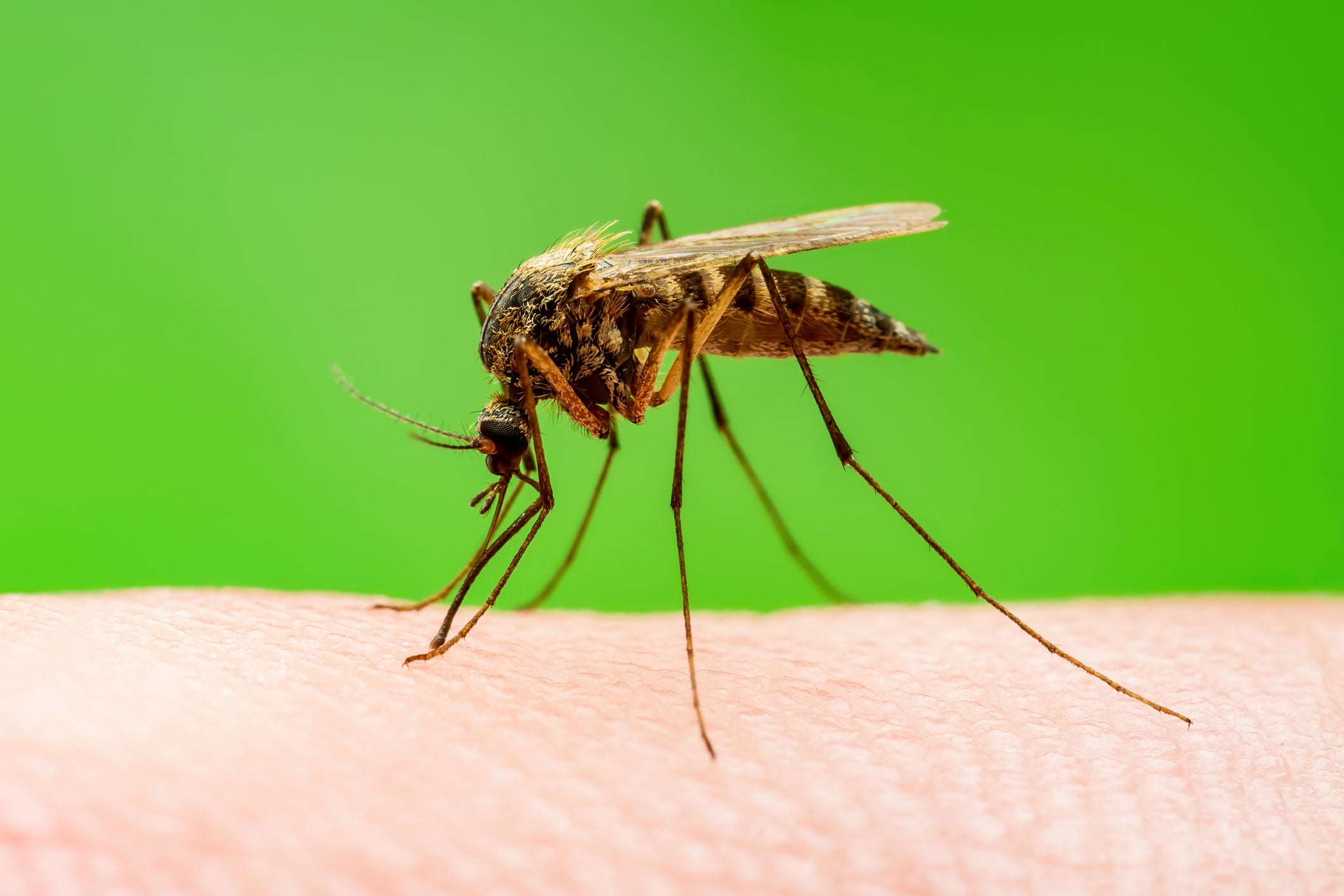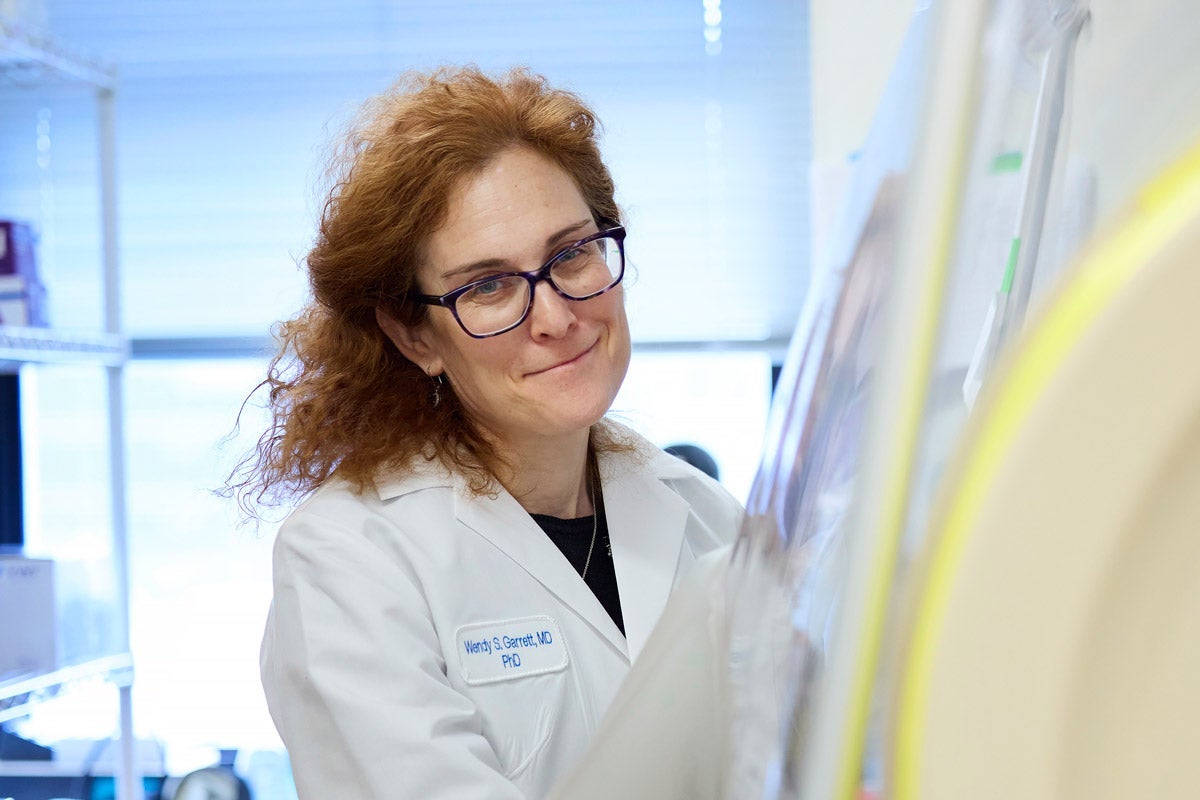Coronavirus (COVID-19): Press Conference with Evan Benjamin, 05/07/21

You’re listening to a press conference from the Harvard T.H. Chan School of Public Health with Evan Benjamin, associate professor in the Department of Health Policy and Management and chief medical officer of Ariadne Labs, a joint center for health systems innovation at Brigham and Women’s Hospital and the Harvard Chan School. This call was recorded at 11 a.m. Eastern Time on Friday, May 7th.
MODERATOR: All right, for today, Dr. Benjamin, do you have any opening remarks for us?
EVAN BENJAMIN: I do. First of all, it’s a pleasure to be here and very excited about this work that we’ve been doing at Ariadne Labs. And I hope this is helpful for you. I just have a couple of words to describe some of the issues and then we can have some Q&A. So let me begin. We have a significant portion of the U.S. population who are hesitant or unwilling to take one of the COVID-19 vaccines. And while approximately 60 plus percent of Americans will accept the vaccine, there’s an estimated 20 percent who are hesitant and are waiting or learning. And there’s approximately about 15 percent of the population who will definitely not take the vaccine. This reluctance to get vaccinated among certain U.S. populations could threaten to derail the progress and really prolong this pandemic. So it’s really crucial to improve the confidence for people to take the vaccine. In addition to a lot of the work that’s being done, such as public health messages, conversations with trusted messengers, including medical providers such as primary care physicians in their offices, are a key method for helping patients make the best decision about COVID-19 vaccination. We believe that there’s still progress that we can make to cut down vaccine hesitancy. And that’s why Ariadni Labs has created a vaccine confidence toolkit. For those who don’t know about Ariadni, we are positioned at the intersection of front-line care delivery and public health, and we’ve been able to quickly design and disseminate evidence-based tools to really improve frontline delivery, and especially during this time of COVID. The vaccine confidence toolkit was developed after a thorough review of the most recent medical information available and with direct feedback from health care providers as well as patients. What we heard from providers is that they want to encourage their patients to have the vaccine, but they were unsure of how to have this conversation. And so, we created this vaccine confidence toolkit to support medical providers, to have these conversations with their patients who have concerns. The toolkit uses motivational interviewing techniques that can help to encourage listening in a nonjudgmental way and then helps to tailor the messages for the specific concerns. What we have found in our research is that there are many concerns people have and that not all vaccine hesitant populations are the same. However, the concern is really fall into three buckets. Bucket number one is, is the vaccine safe? Such that will I get sick from receiving the vaccine? Will I get COVID from the vaccine? The second bucket is about does the vaccine work, will it actually reduce the chances of me getting COVID-19, will it protect me, my family, the community. And the third bucket is can the vaccine be trusted? Can I trust the FDA, the pharmaceutical companies, the scientists, the government? So, our conversation guide and the toolkit really supports trusted messengers and in this case, health care providers who have relationships with patients to listen and address these concerns. We are disseminating this toolkit nationally. We’re partnering with national societies. And we hope that that primary care providers who have these trusted relationships still have the opportunity to have these conversations. We know that the more people get vaccinated, the better chances we’ll have at eliminating COVID from our lives, hopefully getting us back to our freedoms and getting us back to the livelihoods and joys of living. That’s a quick run through about our guide, we’ve shared the toolkit with everyone, so please take a look at that and I can help answer your questions about the process of what we did to develop the vaccine confidence toolkit, as well as any other questions about our research around hesitancy or any other questions.
MODERATOR: Thank you very much, Dr. Benjamin. And like I said, there is a link to the toolkit in the Zoom chat so you can go ahead and see that it’s the same link that’s also in the media advisory. So even after we leave this, you should have a link to the toolkit. All right, looks like first question.
Q: Oh, hello. Thanks for the call. So, I just wanted to double check, I think you just listed 20 percent hesitant, 15 percent won’t get it, is that right? And just there are lots of surveys out there. I don’t know if there’s one particular source you’re going to or is that kind of like a consensus as you look at the different sources, what you come up with?
EVAN BENJAMIN: Yeah, there are a number of different surveys which have been done. I was really averaging many of them just a ballpark that we’ve been tracking. The Johns Hopkins University Center for Communication Programs is one that I work with. But if you see a number of these, they are falling in the ranges that somewhere between 60 and 65 percent of Americans will accept the vaccine. Somewhere around 13 to 18 percent are saying they definitely will not take the vaccine. And then the rest in that middle who are in that hesitant, waiting, learning bucket. So, and the surveys have really tracked over time. They were different in the fall than they were in the spring. But those are some of the rough estimates as we see the overall acceptance rates of the vaccine.
Q: Thanks and just one follow up, did the surveys move with the J&J pause, I mean, you mentioned vaccine safety being one of the key issues for those who are hesitant. And I just wonder, it seems like that group maybe even move into the not I’m not going to get it, but I don’t know what you’re seeing on that.
EVAN BENJAMIN: Yeah. You know, when the pause happened, we were very concerned that this would fuel some of the fire about safety. But after the pause was lifted, actually, we saw the numbers really return, which was very encouraging. And I think in many ways the abundance of caution and when people saw the overall numbers in terms of overall confidence is certainly around the issue of safety did come back to where it was before. So we’re actually really pleased with that. We believe the J&J vaccine will have a significant role to play in vaccinating the population. Thank you.
MODERATOR: Next question.
Q: Hi, thank you for hosting this. I really appreciate it. So employers that I’ve been interviewing have been focused on the one on one conversations that you mentioned that are very helpful. And they’ve been focused on peer influencers. And for context, I’ve been interviewing health centers and workers at those health centers and first responders who’ve been eligible for a couple of months now. But their coverage rates are around 60 percent still. And so I wonder, what do you think about employers offering incentives at this point? Do you think offering bonuses, for example, would sway people on the fence or should they just be doubling down on one-on-one conversations? Thank you.
EVAN BENJAMIN: That’s an excellent question. You know, I think the better part of valor and what we tried to do with our vaccine confidence toolkit was really to realize that the best way to get people to make a decision is really through education. We can’t impose vaccines. We really have to persuade and therefore giving people the right information that addresses their specific needs. We have found has been the most effective way. We’ve seen employers think about two things. One, making the vaccines mandatory and the other providing incentives. I think the Americans certainly don’t like to be told what to do, and that’s going to be a big part of the issue around making things mandatory. I think there is a small role for incentives, but personally, I do not believe that’s going to move the needle as much as really going through a process of education, talking about the strategies that would be helpful for people so that they understand is the vaccine safe? Does it work? Can it be trusted? And how do we tailor those messages to address their concerns?
Q: And just to follow up on that, I hear you when you say that you don’t think incentives will move the needle, but I have to ask if you’ve seen any that have maybe anecdotally, have got one or two or three or more people vaccinated that wouldn’t have otherwise? I don’t know.
EVAN BENJAMIN: I have not seen any data on this. You know, even some states are doing this. West Virginia has been putting in a hundred-dollar incentive for people to get vaccinated. I have not seen data on its effectiveness yet, though.
MODERATOR: Thank you. And just to clarify, talking about employers of health care workers, correct?
Q: That’s correct. So I have been interviewing FQHC’s who were first eligible late in late December or mid-December, January, and the coverage is hovering around sixty three percent for FQHC’s, but these aren’t just health care workers. These are front line, these are front desk people, etc. And so the focus has been on these one on one peer influencers and I guess I find it interesting that there that the strategy is still that. One person explained it to me is because a vaccine hesitancy is a spectrum. And what might not have landed, I don’t know, in January may land today, I don’t know if you have any thoughts on the importance of continuing to use this strategy. Yeah.
EVAN BENJAMIN: Yeah, again, I think the reason we developed the toolkit was to focus on who are those trusted messengers, and then support those trusted messages in having the conversations. And while things have changed over time, we come back to the fact that many people were forming opinions really before they’ve had conversations with their own physician, for instance. And so the purpose of our creating the toolkit was to make sure that actual conversations based on fact, based on listening to concerns, answering with accurate information, making sure those conversations were happening rather than people making decisions based on anecdote or their Facebook feeds. And so our feeling is if we have the conversations with trusted messengers and we can support the messengers having these conversations, that that will be the biggest way to increase the vaccination acceptance rates among the hesitant.
Q: Thank you.
MODERATOR: Next question.
Q: OK, great. Thank you so much, I appreciate your time. Two questions for you. What does the tool tell you about people who say I’m just going to wait? And then the second question is to follow up on the very good question that just happened about incentives. So how do you address people who say, I’m just going to hold on for a bit?
EVAN BENJAMIN: Well, what we tried to get from the toolkit is what’s behind the waiting? And so by using some motivational interviewing, trying to understand what the concerns are. Is this an issue of safety? So do people want to see more people vaccinated, for instance, or are they aware of the overall safety profile which has been developed now and continues to mature with millions and millions of people around the world? Or is it a concern about the efficacy in terms of if I get it? I’ve heard people get COVID even though they have the vaccine. So what’s the data behind that? So is it an efficacy question or is it a trust question? I want to really make sure that there are not GPS trackers in it before I get it. So what we tried to do in the conversation guide is tease out why are you waiting, and then address those issues very specifically. So, again, we think nudging through education, offering, using choice offerings in terms of understanding the reasons behind it was probably the best way to learn about those concerns and then address them directly. It’s the learning behind the resistance of the waiting. Your second question about the incentives.
Q: You said incentives play a small role, but is there anything that you’ve seen suggested that shame or access are a motivator? For example, you can sit with your friends at Yankee Stadium if you flash your vaccine passport or you can sit in unvaccinated section?
EVAN BENJAMIN: Yes, I think what we tried to do is really explain the benefits of once you’re vaccinated. So we’ve seen the CDC changing recommendations of how people can come together, that the vaccines are keeping people safe. They’re allowing people to meet their family members, that the impact it’s had. We’re starting to see this now, the numbers of which are coming down, we believe, are related to the increased amount of vaccinations and therefore allow us to get back as a community to the things that we want. So focusing in on the positives, I think does play a significant role. But I think trying to avoid the sort of Machiavellian sections of vaccinated unvaccinated or getting to passports to be able to move about society, not sure that would be accepted or as effective really as one on one conversations with trusted messengers. Thank you.
MODERATOR: Next question.
Q: Good morning, Dr. Benjamin, thanks for taking the time today. My question had to do with sort of the age disparity that we’re seeing. So here in Maine, we’ve got a lot of old people, as everybody knows, they were pretty eager to go out and get vaccinated. So we’ve got a real good percentage of, you know, 60 and older who are protected, which is great. We’ve got a really big gap among younger people, 20s, 30s, 40s, etc. And those are the people that are driving cases and hospitalizations and even in some cases, some deaths. But it seems to me that there’s still this dramatic disconnect between some younger people who just don’t see the virus as a real threat to them. And so they don’t you know, if they’re looking at do I take my chances with the virus or do I take my chances with this vaccine that maybe was rushed or, you know, maybe has some side effects. And I wonder, you know, what kind of messaging for that population is most effective and are you seeing this in other places, too?
EVAN BENJAMIN: Yeah, I think this is a general concern we’ve seen among the hesitant and both young and old, but particularly the young who may have this this feeling that they are more or less at risk, more naturally immune. And there we’re really trying to create the message that this is much more than about you. It’s much more than about the individual, the more the virus exists in our society two things happen. One, the virus has a chance to mutate. It’s still being passed around. And if it mutates into something that’s even more transmissible or more deadly, that’s a real concern to us or not susceptible to a vaccine. The second is that people who are unvaccinated and have COVID can pass it to others in the community, including those who may have been vaccinated, maybe have a less strong immune response. And we know that that’s certainly a possibility, that even vaccinated people can get the virus. And so our messaging is the side effects of this vaccine are so rare. And we actually compare it to being hit by lightning in the United States. We have about one to two out of a million chances a year of being hit by lightning. Any side effects, serious side effects of the vaccine is actually significantly below that. And yet your chances of getting the virus itself or passing it on in the community are significantly higher than any risk one would have from a serious complication from this virus, which is very rare. So we’re trying to trying to approach this through education, by talking about the risks and talking about the impact on the community itself.
Q: And if I could just follow up with one more thing. Another area of concern here in Maine and probably other states as well is reaching rural populations. And these are, as we talked about, the next stage, which I think is reaching people through their primary care doctors. There’s a lot of people in rural Maine, in rural America that don’t see their primary care doctor all that well. And don’t ever go to the doctor unless they break their hip or something. So, you know, are there different sort of outreach things that primary care doctors can do to patients that they may not see regularly or people who don’t have primary care physicians at all, which could include a lot of younger people?
EVAN BENJAMIN: Yeah, in fact, we’re starting to see now both the states and governments, as well as health systems, are creating much more proactive approaches, getting out to people’s homes, people who are shut in to do two things. One, have conversations with them, such as using our toolkit to have the conversation about should they be vaccinated and then right there have the vaccine available. And so I’m really pleased to see both states and private health systems taking this much more proactive approach now, particularly for people who don’t go to their primary care physicians or don’t have access. So that’s very encouraging. We have to do everything we can to have these conversations and have equitable access to these vaccines. Thank you.
MODERATOR: Next question.
Q: Hi, thanks. I was so glad that I asked the question about younger populations and I had a really quick follow up on that. You mentioned that people’s concerns tend to fall into three buckets. And I wondered for the 30 and under group, did you find their concerns tending to fall into one bucket more than others?
EVAN BENJAMIN: Well, I will say again that what we find is that the population of hesitant people, they’re not monolithic. We see a spectrum of politics and a spectrum of age. So it’s very difficult to classify the young people just following into this issue of concern over safety or efficacy or trust, because it’s really filtered through so many other layers of both of politics and race and location and income. So it’s very difficult to see. In our research, we saw that the populations are not monolithic and there are so unique and have so many contributing factors. And that’s why when we created the toolkit, we thought the best approach was to create a motivational interviewing technique that really promotes listening and trying to understand what are your concerns, what do they stem from, and then addressing that directly, rather than assuming that all young people or all rural people have fallen into this bucket or that.
Q: Great, thank you.
MODERATOR: All right, looks like that may be our last question. Does anybody else have any other questions? I’m going to ask a question I think is probably outside your expertise. I’m going to try anyway. So do you have any idea about how we have been talking, people that kind of touched on employers making vaccinations mandatory? Do you see that backfiring in any way or is it even possible for employers to do at this point?
EVAN BENJAMIN: Well, I do think private employers may have that right to do that, but it’s also going to vary state by state. While the vaccines are still under emergency authorization, I think that’s also a bigger concern once the vaccines are completely FDA approved. We may see an increase in the amount of employers wanting to make it mandatory, and I think there’ll be a higher chance that that could happen. So, again, the mandatory aspect of this, I think, could play a role. A lot of legal issues in terms of both FDA authorization and how the states are going to manage that. Our goal here was to say let’s listen, let’s create a toolkit to allow people to have conversations, to learn about their concerns, addressed them directly, support those conversations with trusted providers. And hopefully that’s going to be a big help right now.
MODERATOR: Thank you. You had mentioned right now that things much change once the vaccines were fully approved by the FDA instead of just authorized through an EUA. What’s the difference in that situation?
EVAN BENJAMIN: Well, you know, when things are passed through the way they really are taking emergent, it’s an emergency in terms of a public pandemic. And the efficacy is based on the trials that are done immediately to say this. This makes sense from a safety profile. When it moves into a full FDA, there’s more hurdles to jump through in terms of the process that’s there. And so the timing, once it takes a little bit longer, they’re going to have plenty of data to be able to make that decision. And I have no doubt they will be making that decision for full FDA approval. But it has to go through the FDA hurdles.
MODERATOR: OK, great. Does anybody else have any final questions? All right, Dr. Benjamin, do you have any final thoughts for us before we go?
EVAN BENJAMIN: I just I would please take a look at our vaccine confidence toolkit. You’ll get a sense of how it can be used. I would say the biggest thing for me I would want people to walk away with one is I’m very optimistic that we’re going to be able to get to high levels of vaccinations. We think that if you avoid judgment and listen and tailor the messages to different perspectives, explain the benefits, explain with data that people really are much more open, and particularly when that comes from a trusted provider. We hope this is helpful and we hope the toolkit really has an impact for primary care providers and others who are working with their patients.
This concludes the May 7th press conference.


